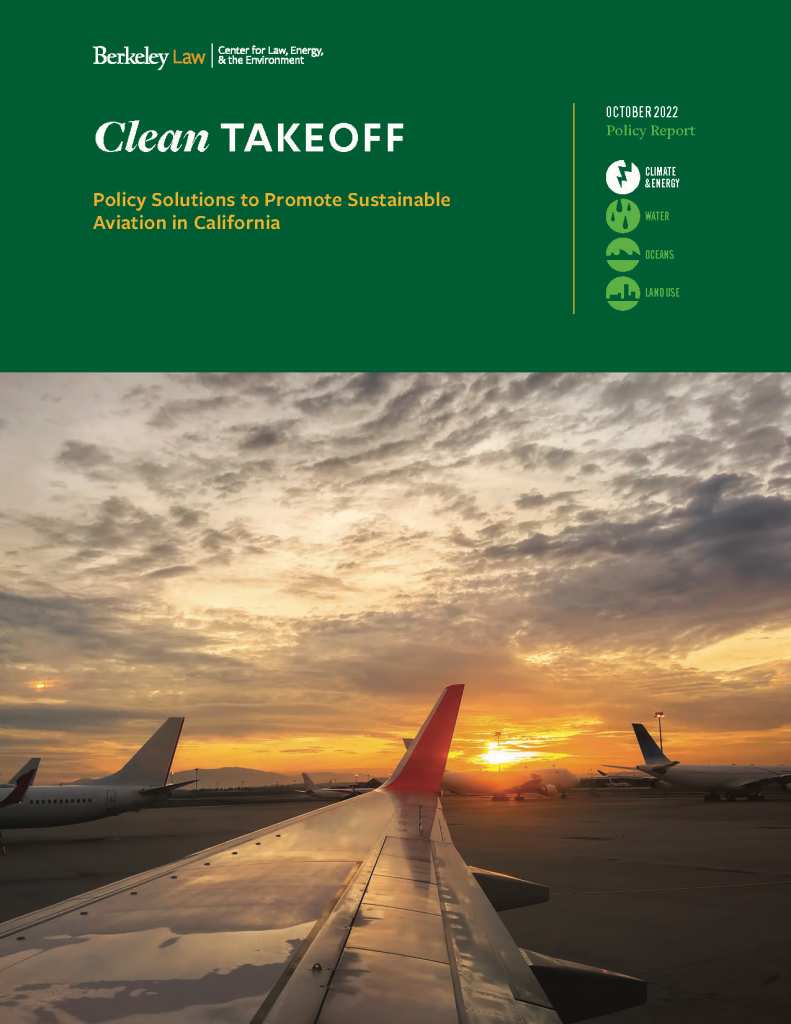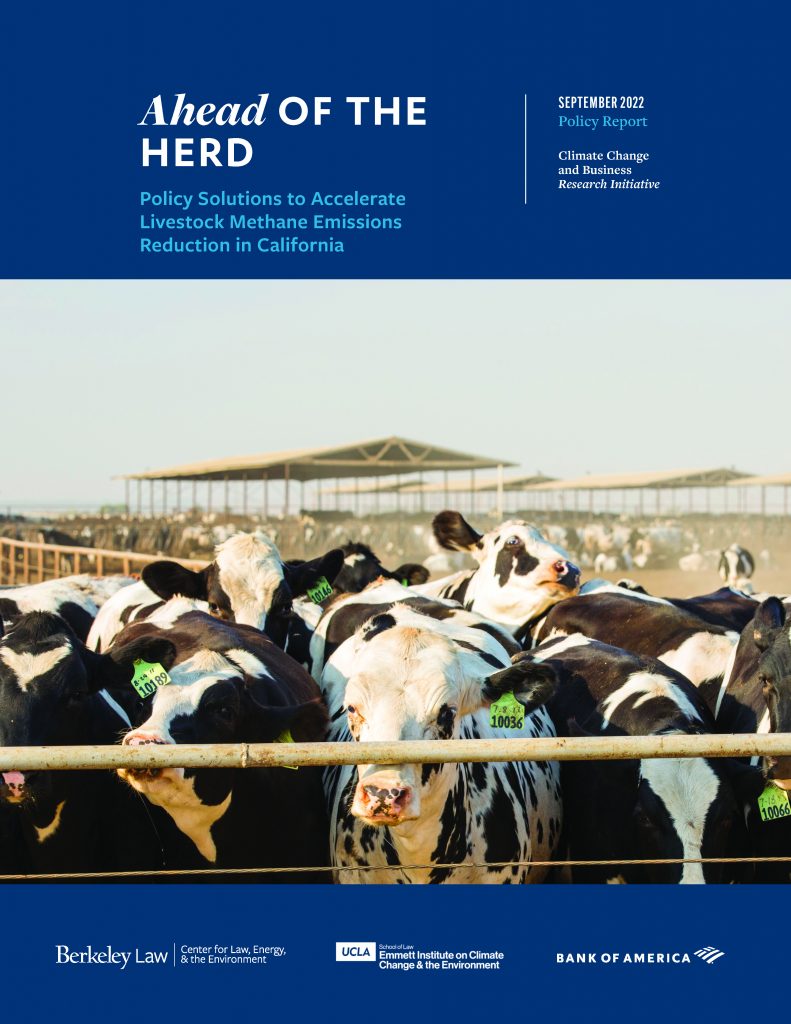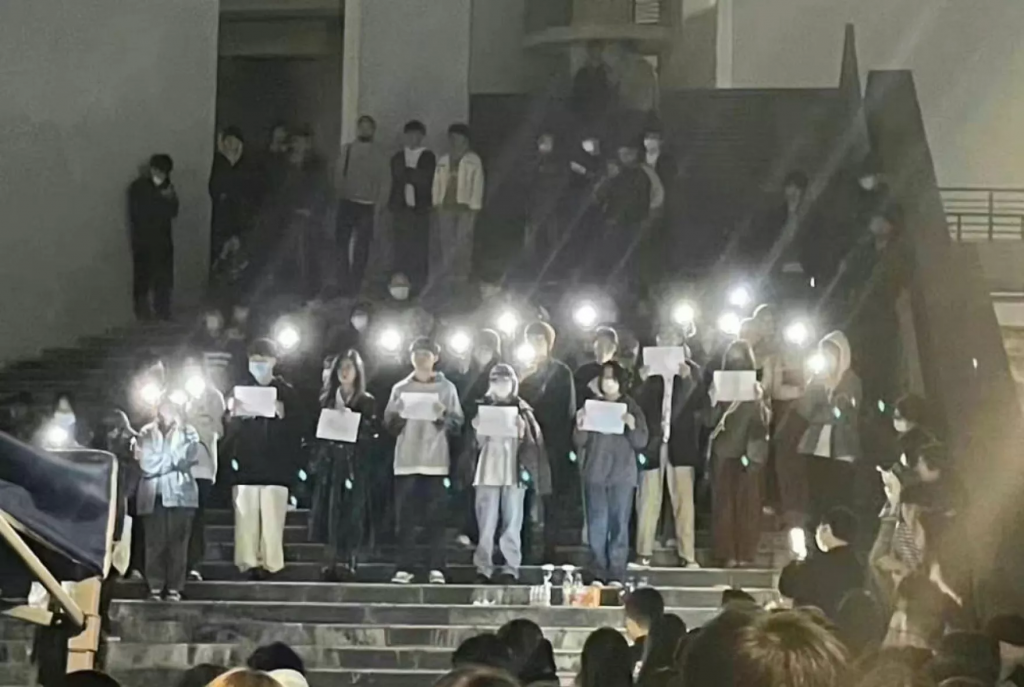
I’m guest hosting today’s Your Call, where for the first half hour we’ll cover the widespread protests in China over the country’s zero-Covid policy and how the government is using its vast security and mass surveillance system to stifle the protests. We’ll be joined be Jiayang Fan, staff writer at The New Yorker.
Then in the second half of the program, we’ll discuss a recent Propublica investigation about the growing and profitable hospice industry. At the start of this century, for-profit providers made up 30% of the field. But today, they represent more than 70%, tripling between 2011 and 2019 alone. Companies in the hospice business can expect some of the biggest returns for the least amount of effort of any sector in American health care, according to Propublica. Joining us is the author of the report, Ava Kofman, a reporter on ProPublica’s national desk.
Tune in at 91.7 FM in the San Francisco Bay Area or stream live at 10am PT. What comments or questions do you have for our guests? Call 866-798-TALK to join the conversation!

California made history this year when Governor Newsom signed a long-sought reform to deregulate local parking requirements on infill projects (as I blogged about back in September). But could one provision of the new law undermine its effect on the ground?
The issue is a provision in AB 2097 (Subdivision 65863.2(f), for anyone following along at home) that ostensibly exempts from this law any local requirements for electric vehicle charging installations in multifamily dwellings or commercial properties or to allow accessibility to persons with disabilities. In other words, if a local government required not just parking (which would now be illegal under the new state law) but also parking specifically for EVs and those with disabilities, what happens to that second part of the requirement?
The implications are significant. A city with such an EV or disability-access requirement on the books could potentially argue that developers will still need to provide some minimum parking that has these features. In fact, they could use the requirements as a backdoor parking mandate where none otherwise now exists. While most people support EV charging and disabilities access requirements for parking spots, doing so in the context of this legislation would clearly contradict the intent and plain language of the law.
When AB 2097 passed, it specifically deregulated parking mandates that typically come from local zoning codes, which have traditionally required developers to build a certain number of parking spaces for each housing unit and/or each 1,000 square feet of building area. EV and ADA parking requirements, however, usually come from a different section of local requirements, namely the building codes. Often these require that a certain percentage of any parking spots meet the additional standards of offering electric vehicle charging and/or accessibility. Crucially, building codes do not usually require that developers build any amount of parking—just that when they do, the parking meets certain standards.
In response, AB 2097 specifically preserved these building-code percentage standards in order to ensure that any parking provided at least advances sustainability and accessibility goals. But the provision was not meant to provide an easy out for local governments to circumvent the law’s fundamental goal of ending parking mandates near transit. Otherwise, cities could simply mandate a minimum number of parking spaces that must include electric vehicle charging (a percentage of which would by law also be handicap-accessible), and then AB 2097 would cease to have any effect at all.
So take a city that requires 30% of all required parking to have an EV charger. In that instance, they might argue that AB 2097 in fact only bans 70% of the parking mandate. Following that logic, if the city mandated 100% of spaces must include EV charging, then AB 2097 would effectively ban zero percent of parking mandates. That outcome would completely negate the purpose and impact of the new law.
The effect could be detrimental to infill projects. Imagine a small-lot developer who wouldn’t otherwise build any parking spots on a site under AB 2097. If cities now insisted that the developer provide EV charging and disabilities access, the developer would have to build parking where none was contemplated. That means providing two discrete accessible paths of travel from the street: one from the sidewalk and one from a parking facility that wouldn’t otherwise be there. This outcome would likely lead to developers continuing to orient buildings around parking spots rather than pedestrian, bicycle and transit access.
Instead, the only defensible read of the provision is that if a city requires a certain percentage of parking spots to have EV charging and be accessible to those with disabilities, those percentages should still apply: but only if the developer decides to build any parking at all. If the developer opts out of on-site parking, then a percent of zero is zero. If the developer wants to provide only half the parking that would have been locally required under the old regime, then the number of EV and disabilities-accessible spots should be halved.
Ultimately, the point of AB 2097 was to reduce dependence on automobiles, enhance access to buildings by non-vehicle modes, and lower the cost of building all types of housing near transit. If there’s parking, then open it to EVs, those with disabilities, and other local requirements. But if none exists, local governments shouldn’t force requirements that run afoul of the law.
We’ll see if cities with these requirements try to exploit this provision. If so, it may take some state agency guidance to make this point, or worst case clean-up legislation to clarify. Otherwise, one of California’s most important climate and land use bills could face some unfortunate headwinds on implementation.
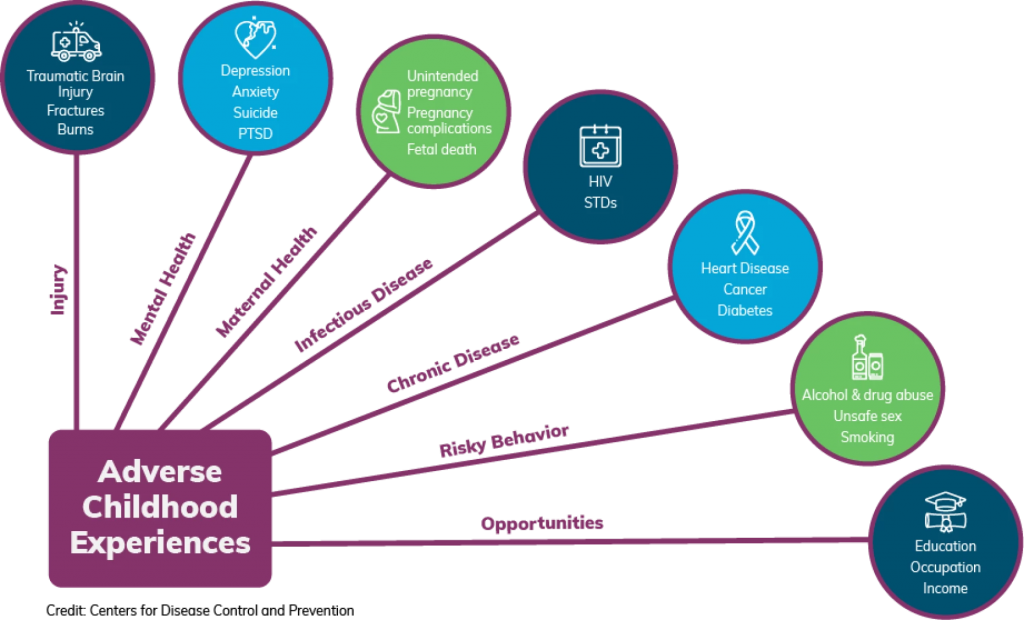
On tonight’s State of the Bay, we discuss Proposition 30, which would tax the wealthy to fund wildfire mitigation and electric vehicles. Why are Governor Newsom and the teachers unions against it? How will you vote? Joining us is Sammy Roth, staff writer for the Los Angeles Times covering energy.
Then we’ll focus on Adverse Childhood Events (aka ACEs), which have been linked to poor mental and physical health as adults. How can we mitigate these negative effects? What are recent studies showing? What policies are in place to protect our children? Our guests include:
- Dr. Dayna Long, pediatrician, researcher and director of Community Health and Engagement at UCSF
- Dr. Nicole Bush, Associate Professor, Psychiatry UCSF Weill Institute for Neurosciences and clinical researcher
Finally, we’ll interview Maryam Qudus, also known as Spacemoth, as she discusses her debut album No Past No Future.
What would you like to ask our guests? Post a comment here, tweet us @StateofBay, send an email to stateofthebay@kalw.org or leave a voicemail at (415) 580-0718.
Tune in tonight at 6pm PT on KALW 91.7 FM in the San Francisco Bay Area or stream live. You can also call 866-798-TALK with questions during the show.
A new CLEE report discusses policy solutions to reduce aviation emissions in California. Register for our webinar on this topic on Monday, November 7th, 9-10am PT.
What actions can California policy makers take to help decarbonize the aviation sector? UC Berkeley Law School’s Center for Law, Energy and the Environment (CLEE) is releasing a new report today, Clean Takeoff: Policy Solutions to Promote Sustainable Aviation in California, which offers recommendations for progress.
Airplane travel is responsible for more than 2 percent of global carbon dioxide (CO₂) emissions, with non-CO₂ emissions raising the total climate impact further. While no existing zero-emission technologies can power all flights today, sustainable aviation fuel represents the most promising and immediate solution to reduce aviation emissions — and it will remain key to decarbonizing long-haul aviation, even in 2050.
In response, Governor Newsom called for a 20 percent clean fuels target for the aviation sector in July 2022, and the steps described in Clean Takeoff could help the state achieve those goals while maximizing air quality and economic co-benefits in communities near airports and production facilities.
Based on input from a stakeholder convening of industry leaders, advocates, academics and other stakeholders, Clean Takeoff recommends that state leaders, including the governor, Air Resources Board and legislature, boost in-state sustainable aviation fuels by:
- Developing a comprehensive long-term plan to decarbonize in-state aviation fuels by a firm deadline
- Taxing or levying a carbon fee on conventional aviation fuel and using the proceeds to fund research and development, where consistent with federal law
- Creating a standalone, mandatory low carbon fuel standard exclusively for aviation fuels, where consistent with federal law
- Implementing permit-streamlining pathways for priority sustainable aviation fuels
- Drafting a comprehensive sustainable aviation fuel feedstock sustainability framework
- Facilitating offtake agreements, contracts-for-differences (where the government pays the fuel producer any difference between the market price and a contractual floor for a set period of time), low-interest loans, and commercial partnerships to boost sustainable aviation fuel supply and demand
In addition to boosting near-term sustainable aviation fuel, these actions can simultaneously support development of long-term solutions, such as electrification, hydrogen fuels, and improved airframe design, among others.
Ultimately, California is well positioned to advance these technologies and fuels, given its pioneering role developing programs that have boosted on-road zero-emission vehicles, as well as its position as a major economy with 12 international airports and numerous in-state flights.
To achieve this vision, state leaders will need to engage all stakeholders, including airlines, airports, affected communities, labor, and agricultural leaders, in order to boost a market for sustainable aviation that can scale globally.
To learn more, register for our free webinar on Monday, November 7, 9-10am PT, featuring:
- Dan Adler, California Infrastructure and Economic Development Bank
- Nikita Pavlenko, The International Council on Clean Transportation
- Erin Cooke, San Francisco International Airport
Read Clean Takeoff: Policy Solutions to Promote Sustainable Aviation in California
This post was co-authored by Katie Segal.
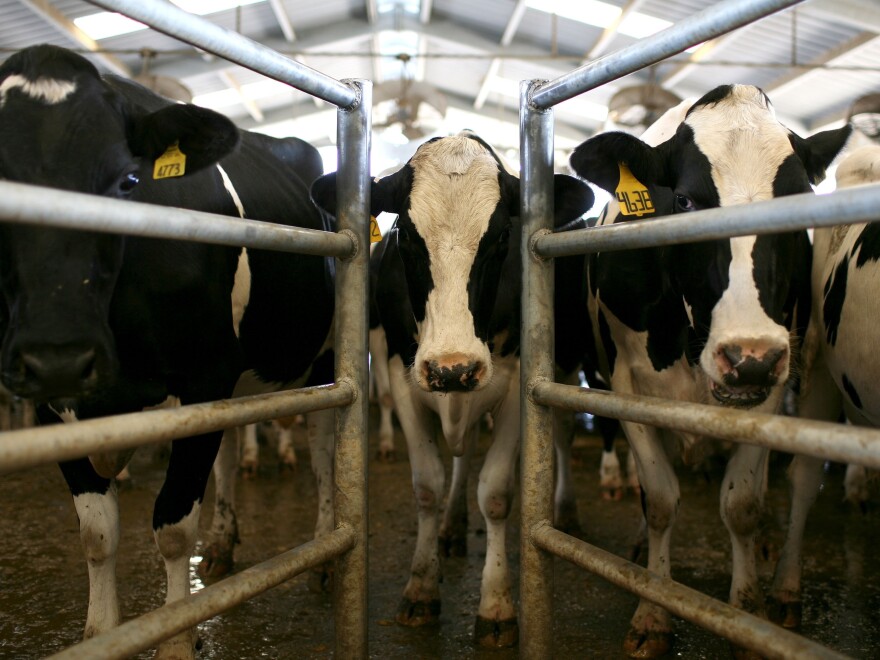
Tonight on State of the Bay, we’ll dive into California’s dairy industry and what is needed for policymakers and businesses to meet state methane emissions goals. It’s a topic we covered in our recent Berkeley/UCLA Law report Ahead of the Herd. We’ll be joined by:
- Albert Straus, Founder and CEO of Straus Family Creamery and
- Jamie Katz, Staff Attorney for Leadership Council for Justice and Accountability.
Plus we’ll discuss the campaign to legalize sports betting in California, which has become the most expensive ballot initiative fight in US history with Ari Plachta, Political Enterprise Reporter for the Sacramento Bee.
Finally, we’ll explore a piece of history at San Francisco’s First Responders Museum with Jim Lee, Veteran San Francisco Firefighter and Board Chair of the Guardians of the City.
What would you like to ask our guests? Post a comment here, tweet us @StateofBay, send an email to stateofthebay@kalw.org or leave a voicemail at (415) 580-0718.
Tune in tonight at 6pm PT on KALW 91.7 FM in the San Francisco Bay Area or stream live. You can also call 866-798-TALK with questions during the show.
Methane is a climate super-pollutant that is 80 times more powerful than carbon dioxide over a 20-year period. Given its potency and short life, experts believe that reducing methane emissions is the highest-yield action that governments and businesses can take to curb near-term warming.
In the US, livestock are responsible for over one third of anthropogenic methane emissions; in California, this number is over 50 percent, largely due to the state’s dairy sector, whose 1.7 million cattle produce nearly 20 percent of all US milk. State leaders have taken first-in-the-nation steps to address livestock emissions, but much work remains to achieve 2030 targets.
Our new report Ahead of the Herd from CLEE and UCLA’s Emmett Institute recommends several actions for state leaders to meet these targets while prioritizing environmental and public health:
- Create an interagency one-stop shop for greenhouse gas, air quality, water quality, and other data reporting and technical assistance
- Update the state’s Low-Carbon Fuel Standard to better assess the full life-cycle impacts and additionality of digester projects, support environmental health protections, and increase certainty for operators
- Accelerate approval of and increase financial support for new enteric emission reduction strategies
Livestock methane emissions stem from two oxygen-free (anaerobic) environments: the gut of animals, which produces enteric emissions in the form of burps; and liquid pools where manure is stored. (Worldwide, enteric emissions represent the majority of livestock methane, but in California the balance is closer to 50-50 due to the high prevalence of liquid manure storage at large-scale dairy operations.)
These two emissions sources call for two distinct sets of emissions reduction strategies. For manure emissions, the strategies include anaerobic dairy digesters that capture methane to generate energy or convert it into offsite fuels; and alternative manure management strategies that introduce oxygen into the waste storage process or filtering the waste through an ecosystem of hungry earthworms. For enteric emissions, the strategies include feed additives, diet modifications, vaccines, and breeding techniques that alter the chemistry of digestion to reduce methane generation.
California has developed a number of programs to reduce these emissions and as a result, according to the California Air Resources Board, has achieved a methane emissions reduction of over 3 million metric tons of CO2 equivalent since 2013. But the state is only on track to achieve about half of the 9 million metric ton reduction needed to achieve the 2030 target.
At the same time, dairy digesters—the leading emissions reduction strategy to date—are highly controversial. Neighboring communities and environmental justice advocates have serious concerns around the air and water quality impacts of large-scale, concentrated dairy operations—impacts that they argue are exacerbated by incentives for digesters. Industry leaders counter that facility concentration is driven by industry-wide economics rather than by digesters, and that digesters reduce certain air quality impacts compared to uncontrolled facilities.
To learn more about this issue and the report, RSVP here for our November 10th webinar, which will discuss the report and promising strategies to reduce livestock methane emissions, featuring:
- California Department of Food and Agriculture Secretary Karen Ross
- Ermias Kebreab of UC Davis
- Albert Straus of Straus Family Creamery
Download the Ahead of the Herd.
This post is co-authored by Ted Lamm.

Today on Your Call’s Media Roundtable, I’ll be guest hosting a discussion about Wyoming Republican Rep. Liz Cheney’s primary loss on Tuesday, as well as her record in Congress. Cheney and seven other House Republicans who voted to impeach Trump have now either lost primary races or are retiring from Congress. What does this mean for the future of the Republican Party and our upcoming elections? Joining us will be:
- John Nichols, the national-affairs correspondent for The Nation and author of several books, including The Fight for the Soul of the Democratic Party: The Enduring Legacy of Henry Wallace’s Anti-Fascist, Anti-Racist Politics.
Later in the program, we’ll talk about the new PBS Frontline documentary Afghanistan Undercover, which details the plight of women in Afghanistan and their struggle for gender equality. Correspondent Ramita Navai will talk about how she was able to report this story and the latest on women’s status in that country.
Tune in at 91.7 FM in the San Francisco Bay Area or stream live at 10am PT. What comments or questions do you have for our guests? Call 866-798-TALK to join the conversation!
When California state agencies and other local leaders build or approve projects that increase overall driving miles, state law requires them to mitigate those impacts. A new report from CLEE describes how these agencies can reduce vehicle miles traveled (VMT) by investing in offsite options like bike lanes, bus-only lanes, transit passes, and other measures that can effectively and efficiently reduce a corresponding amount of VMT.
Under the California Environmental Quality Act (CEQA), government agencies and developers are required to mitigate (where feasible) the significant environmental impacts of new projects subject to discretionary approval, including impacts to transportation.
Senate Bill 743, originally enacted in 2013, called for a new transportation impact measure that promotes greenhouse gas (GHG) emission reduction and multimodal transportation. In 2018 state leaders updated the CEQA guidelines to recommend VMT as the preferred impact measurement. VMT focuses on total vehicle trip-miles generated by a new project regardless of where they occur or how much traffic they cause.
Mitigating VMT impacts of new projects has the potential to shift California’s development patterns in a more sustainable, transit-oriented direction. It also creates the opportunity—and potentially the need—to conduct mitigation at locations other than the development site when onsite mitigation is not possible or practical. Such offsite mitigation can address the regional and statewide nature of VMT impacts in the most efficient and cost-effective locations, particularly when mitigation might prove difficult at the site of a suburban or exurban development.
If properly conducted, offsite mitigation could maximize flexible and locally appropriate transit, active transportation, and density investments. But to carry it out, state and local government leaders will need new frameworks to track mitigation obligations, plan investments, and facilitate transactions. CLEE and others have previously proposed “bank” and “exchange” programs to manage these capacities.
CLEE’s new report, Implementing SB 743: Design Considerations for Vehicle Miles Traveled Bank and Exchange Programs advances these proposals with a set of strategies for state agencies like Caltrans (the state agency most likely to be responsible for VMT-inducing projects) and local governments to develop bank and exchange programs that build on their existing environmental mitigation efforts. In addition to analyzing the legal and programmatic setting for VMT mitigation banks and exchanges, the report offers a set of recommendations for policymakers including:
- A state-level program for state agencies to manage mitigation and select locally appropriate investments, likely based on collaboration between Caltrans and other state transportation and land use agencies
- Regional-level programs for local and regional agencies to manage mitigation flexibly and efficiently within appropriate geographic limitations—likely managed by Metropolitan Planning Organizations or Regional Transportation Planning Agencies, but potentially run by large cities or counties in some cases
- Frameworks for analyzing the “additionality” of VMT mitigation investments to ensure that bank and exchange program funds support VMT reductions beyond those that would have occurred anyway
- Strategies for defining equity in the context of VMT mitigation and integrating equity into the decision-making of a bank or exchange program
Cities and counties around the state, from San José to San Diego, are in the process of developing their own approaches that could become, or could integrate into, VMT banks and exchanges. Caltrans and local government leaders will require significant time and resources to develop programs that fit the nature of the VMT-inducing projects they oversee and the needs and priorities of the areas they represent—and many questions remain, from prioritizing different mitigation investments to ensuring those investments are made in an equitable fashion. The strategies outlined in the report should help inform these decisions and advance the VMT reduction efforts initiated by the legislature nearly a decade ago.
This post was originally co-authored by Ted Lamm and Katie Segal on Legal Planet.

It’s another double shot today of me hosting shows on KALW 91.7 FM San Francisco Bay Area. First, at 10am PT, I’ll be guest hosting Your Call’s One Planet Series, where we’ll discuss the viability of carbon capture technology in combating climate change. Carbon capture and storage is the process of capturing and storing carbon dioxide from polluting sources and storing it deep in the ground.
The just-passed (but not yet signed) Inflation Reduction Act includes a change in a crucial tax credit for the carbon capture industry—increasing the government subsidy for capturing CO2 from polluting sources from $50 to $85 per metric ton.
Some environmentalists call these carbon capture subsidies a handout to the oil industry and a distraction from urgently needed actions. How effective is this technology? Joining us to discuss are:
Tony Briscoe, environmental reporter with the Los Angeles Times
Naomi Oreskes, Henry Charles Lea Professor of the History of Science and Affiliated Professor of Earth and Planetary Sciences at Harvard University.
Then we’ll cover the socio-environmental impacts of lithium mining to produce electric vehicles. Joining us will be Jennifer Krill, executive director of Earthworks, a nonprofit organization committed to protecting communities from the adverse impacts of oil and gas and mineral extraction.
Second, later today on State of the Bay at 6pm PT, we’ll cover the latest in San Francisco’s housing saga, as the state threatens to take over land use planning for the City. Plus we’ll discuss the rise of autoimmune disorders and learn about California’s youth governor’s race, covered in a new documentary.
Tune in at 91.7 FM in the San Francisco Bay Area or stream live at 10am PT for Your Call and then again at 6pm PT for State of the Bay. What comments or questions do you have for our guests? Call 866-798-TALK to join the conversation!
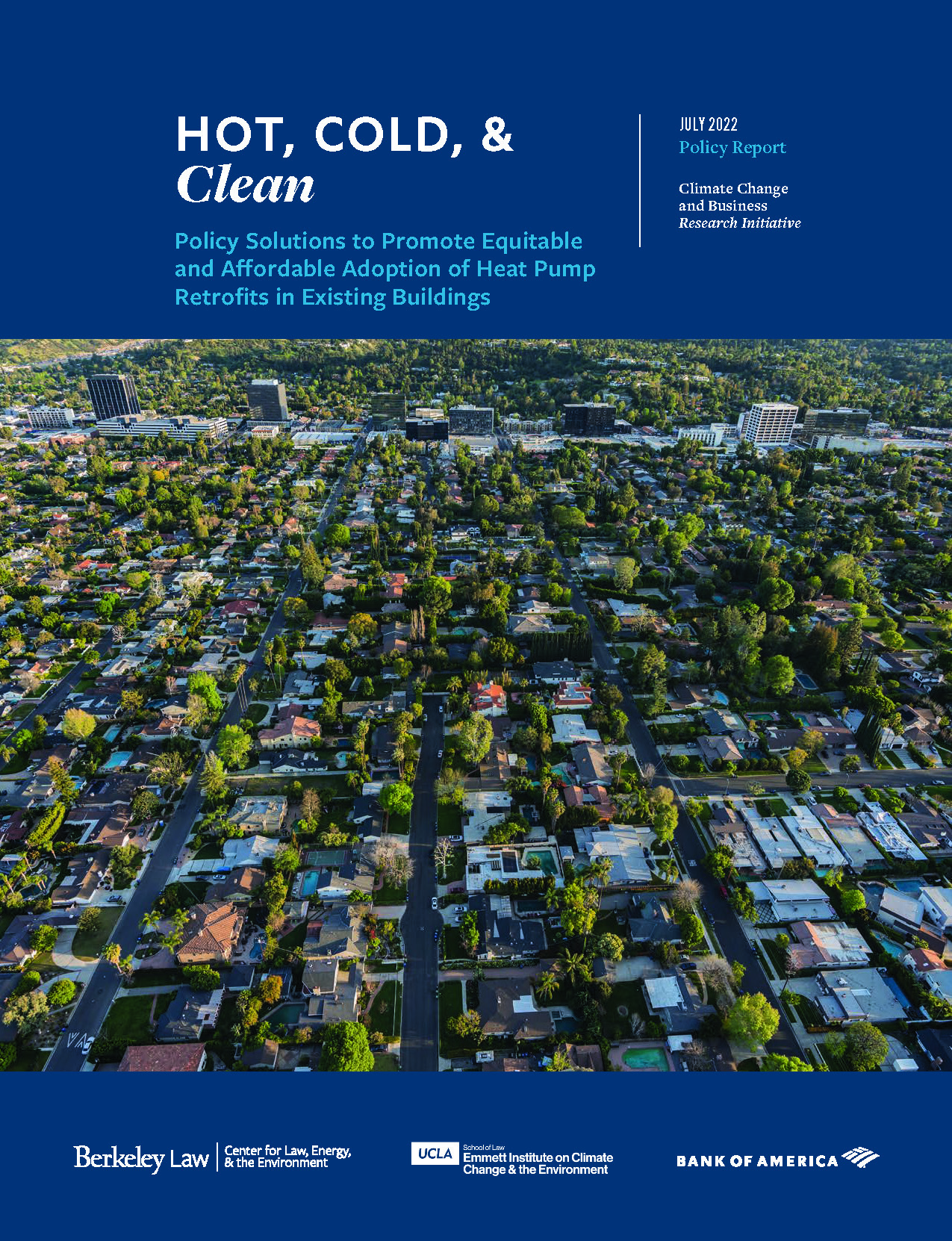
This post is co-authored by Ross Zelen.
As California and other leading climate jurisdictions move toward all-electric buildings, replacing older gas-powered furnaces and air conditioning units with heat pumps can reduce carbon emissions and indoor air pollution while increasing efficiency, comfort and resiliency, especially as extreme heat events increase. Heat pumps are a highly efficient technology that provides all-electric space and water heating and cooling, acting essentially as a two-way air conditioner.
Today, the Center for Law, Energy and the Environment (CLEE) at Berkeley Law and the Emmett Institute on Climate Change and the Environment at UCLA Law are releasing a new report, Hot, Cold, & Clean: Policy Solutions to Promote Equitable and Affordable Adoption of Heat Pump Retrofits in Existing Buildings, which highlights key policy solutions to ensure that California’s push to decarbonize existing homes and buildings will support equitable deployment of electric heat pumps.
Top-priority strategies include setting a clear phaseout timeline for natural gas space and water heaters, protecting low-income tenants from inadvertent rent increases or increased utility costs, and supporting “high road” job training programs to turn heating, ventilation and air conditioning (HVAC) installers and contractors into heat pump champions.
The stakes are high: California’s residential and commercial building sector accounts for nearly a quarter of the state’s greenhouse gas emissions and combustion of fuel for heating and cooling buildings generates more than 10 percent of state emissions. Electric heat pumps provide a deployable solution to reduce emissions from furnaces, water heaters, and other building appliances. To achieve state goals of 40 percent greenhouse gas emission reduction (below 1990 levels) by 2030 and carbon neutrality by 2045, California must significantly reduce emissions from the built environment.
Earlier this year, the California Energy Commission set out an ambitious target of deploying 6 million heat pumps by 2030. With more than 14 million existing residential homes in the state, more than 75 percent of California’s existing buildings built before 1978, and heat pumps installed in only 6 percent of new construction, the state has a long way to go to meet its goals.
Hot, Cold, & Clean is based on a convening of state, local, utility, housing and environmental leaders aiming to identify point-of-purchase, installation, and financing challenges that stymie heat pump deployment. The report captures the progress since our 2021 report Building toward Decarbonization and identifies additional policy solutions to overcome remaining barriers. For example, state leaders could:
- Set a clear timeline for the long-term phaseout of natural gas space and water heaters to provide certainty for utilities, homeowners, tenants and investors.
- Set zero-emission air quality standards for space and water heaters to make heat pumps the baseline technology.
- Enhance funding for low-income homeowners and affordable housing providers to improve electrical infrastructure to facilitate heat pump deployment, in a manner that prevents displacement and rent increases.
- Scale educational models and training programs for high road installer, maintenance, contractor and electrician positions and financially support deployment through midstream incentives for heat pump installations
This is not only a California issue. At the federal level, heat pumps have been recognized as a key technology to reduce reliance on fossil gas. On June 6, President Biden invoked the Defense Production Act (DPA) to rapidly expand domestic manufacturing of heat pumps to reduce building energy use and reduce U.S. reliance on oil and fossil gas. Current domestic U.S. HVAC manufacturing suppliers are not producing heat pumps at the rate needed. Additionally, the Department of Energy announced the first major update on gas-burning furnaces in 30 years, spurring more homes to move to heat pump solutions or adopt more efficient units. These actions should help address key barriers discussed in the report, such as the lack of heat pump supply and the need for increased manufacturer focus on educational workforce training.
To learn more, please join us next Tuesday, July 19 at 1:00 PM PT for a webinar to discuss the report and equitable heat pump deployment, featuring:
- Commissioner Andrew McAllister of the California Energy Commission
- Chelsea Kirk of Strategic Actions for a Just Economy (SAJE)
- Jose Torres of the Building Decarbonization Coalition.

